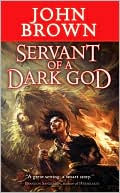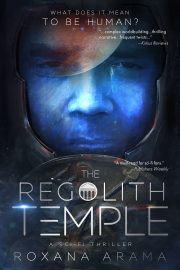Key Conditions for Suspense:
Part 15 – Story Cycle Action & Trouble
by John D. Brown
 The following is part of a continuing series. If you wish to start at the beginning, head to It’s All About The Reader.
The following is part of a continuing series. If you wish to start at the beginning, head to It’s All About The Reader.
In my last post, I introduced the story cycle and explained the inciting incident and reaction. In this post, I’ll explain the action and trouble.
At the end of a reaction phase, the character decides to take some action. The goal or purpose of the action is to fix the problem or complete some step along the way to fixing the problem. The character will either reach that goal or she won’t.
When the goal is clear in the reader’s mind, they form a question: will the character solve the problem? It’s a clear yes or no proposition. And because the character is deserving and the problem is significant enough for the reader to care, the reader will hope the character succeeds and fear she might not.
If, however, you fail to make the decision and goal clear to the reader, then they won’t worry and hope as much as wonder what the hero is doing. Too much of that and we’re back to confusion instead of suspense. So make the decision and goal clear right up front.
If it’s a scene where the opposition is doing something to the character, then you make the opposition character’s goal clear. Think about Hitchcock’s bomb in the example (found in Part 10 of this series). The hero doesn’t know about it. But the reader does. The reader knows exactly what might happen. And because they know about the awful possibility, they can worry about it.
In our example of the water leaking through the ceiling, let’s say the hero decided to call the apartment manager. Often, in our normal lives, the first action will solve the problem. In this case, the manager is in. The manager immediately calls the maintenance man who goes up stairs, finds that the renters above left a sink running, turns it off, mops up the mess, and fixes the issue.
Problem solved.
That’s real life. We solve all sorts of problems on the first or second try in real life. We keep tension down. But with stories we don’t want to eliminate tension. We want to build it. The reader wants to worry for a good long time. And so the form has to be different. This is why problems in stories aren’t fixed so easily.
So what do you do?
You change the result of the action to something that maintains or builds tension. There are five types of consequences that can occur when you attempt to fix a problem.
Which of those will make the problem harder to solve and increase a reader’s hopes AND fears for the character?
Not the first one. You cannot present a problem to your character and have them fix it on the first attempt. You can’t do this because then the story is over. There’s no hope and fear; there’s only “done.” At that point the reader shuts the book and picks up another. You want to BUILD reader tension and curiosity and only release it after it’s grown to a sharp point. So a simple “yes” is out.
What about the others?
- • “No” will let you maintain tension. It doesn’t really change the story situation, but it can work.
• “No, but” keeps the trouble in place and allows your character to make progress on solving the problem. This continues the fear and builds a bit of hope. That sounds good.
• “Yes, but” will allow the readers to hope for a while and then be plunged back into fear. That sounds good too.
• “No, furthermore” will increase reader worry. We like worry, so that will work as well.
Of course, these kickers, the yes-buts and no-furthermores, will have more power if they also include an element of surprise. Not only does our hero experience a setback, but the situation has been altered in an unexpected way that puts the readers on their heels—Crap! What will the hero do now?!
Please note that the buts and furthermores don’t have to follow the yeses and no’s immediately. They can, but they don’t have to. Sometimes in a “yes, but” the other shoe drops immediately. Sometimes it drops in the next scene when the villain reacts to what the hero just did. Sometimes it drops a few scenes later. But eventually it must drop, or the story ends. So there is no ideal length for the time between a “yes” and a “but.” There is only the principle that suspense depends on problem, and the longer you go without a problem, the more likely it is that your reader’s tension will decrease.
I know some of you are thinking: wait, sometimes problems are solved in the middles of stories. This is often the case with subplots, but sometimes the main story question seems to be solved as well. So what do you do? If the result truly is a yes, you must drop a new problem in its place or change the nature of the problem. For example, in The Incredibles, Bob deals with his “I’m Bored” problem by accepting a hush-hush job offered by a private company to take out a rogue robot. Boredom problem fixed. But in the very next shot we get a mysterious and slightly sinister scene suggesting more troubles, and with that mystery (problem) the story moves forward. Hope and fear depend on trouble, so for every problem you solve, you need to raise at least one more or switch to another plot line (problem) that’s still active.
Of course, suspense is not the only delight stories deliver. If you ease up on the suspense and deliver a chapter or two of humor or wish-fulfillment, the reader might not notice or care. In fact, such a switch might be exactly what the reader needs. Nevertheless, the story can’t progress until we come back to the central problem. If readers complain that the story is slow or wanders, it just might be that you’ve strayed a bit too long from trouble.
Despite the variations just mentioned, for your story to continue, your character will enter the action with a goal and end up with trouble. In summary, the main parts of the action are:
- • Goal
• Conflict
• Trouble
It’s true we could call that last step “Result,” but for most of the story it’s trouble, and so I’m sticking with it to emphasize the point.
When we give our hero more troubles, we kick the story back up to problem, which leads to a reaction, which leads to action, which leads to more trouble, and another reaction, and around and around we go. We continue to kick the story around the cycle until the very end when the final answer to the final action is a big resounding YES! Or it’s an everlasting NO and the readers close the book and weep, or blog about heartless authors, or, like I did once, rip the offending ending out of the book, write a better one, and glue it in place.
At this point, we’ve gone around the cycle. However, we’re not done. There’s a dynamo at the story cycle’s core that makes it go round. I’ll talk about that in the next post.
Happiness,
John
•••
 John Brown is an award-winning novelist and short story writer. Servant of a Dark God, the first book in his epic fantasy series, was published by Tor Books and is now out in paperback. Forthcoming novels in the series include Curse of a Dark God and Dark God’s Glory. He currently lives with his wife and four daughters in the hinterlands of Utah where one encounters much fresh air, many good-hearted ranchers, and an occasional wolf.
John Brown is an award-winning novelist and short story writer. Servant of a Dark God, the first book in his epic fantasy series, was published by Tor Books and is now out in paperback. Forthcoming novels in the series include Curse of a Dark God and Dark God’s Glory. He currently lives with his wife and four daughters in the hinterlands of Utah where one encounters much fresh air, many good-hearted ranchers, and an occasional wolf.
For a list of all of the posts in this series thus far, click on the “John D. Brown” tag.


